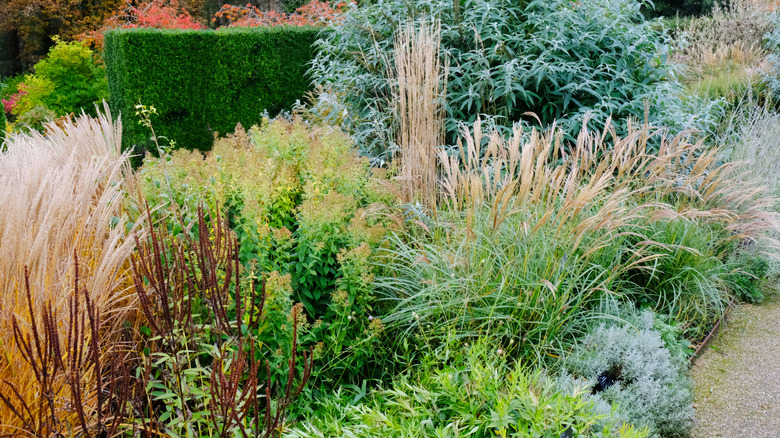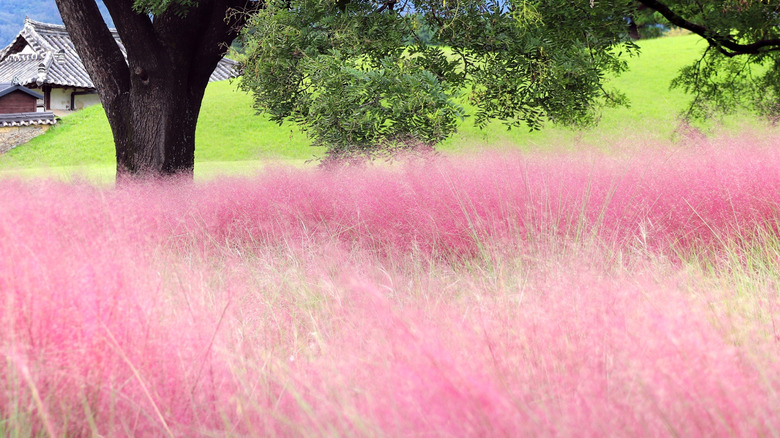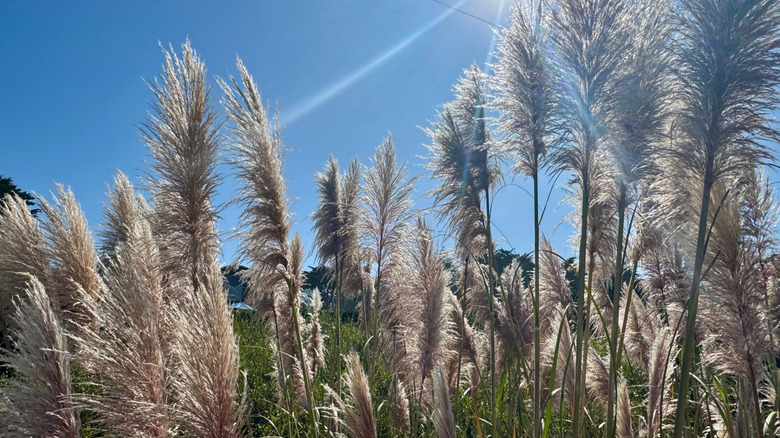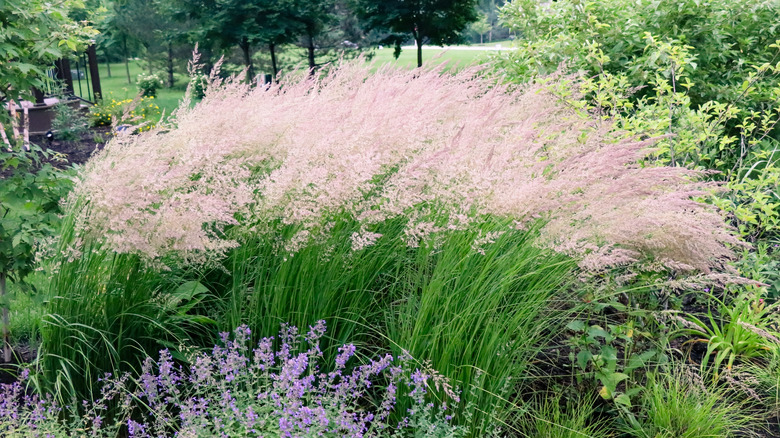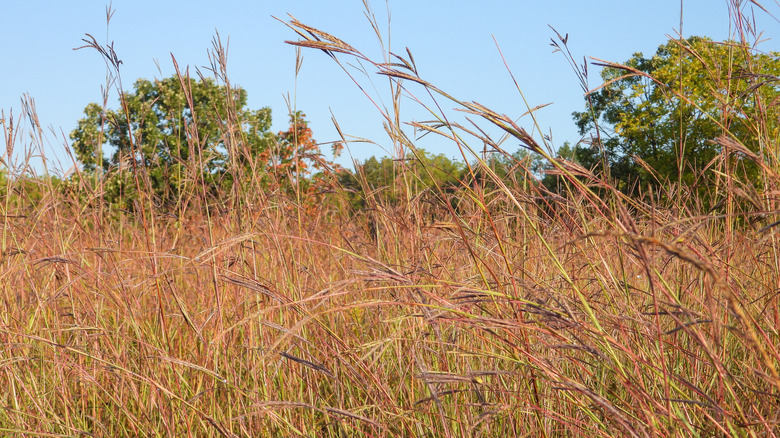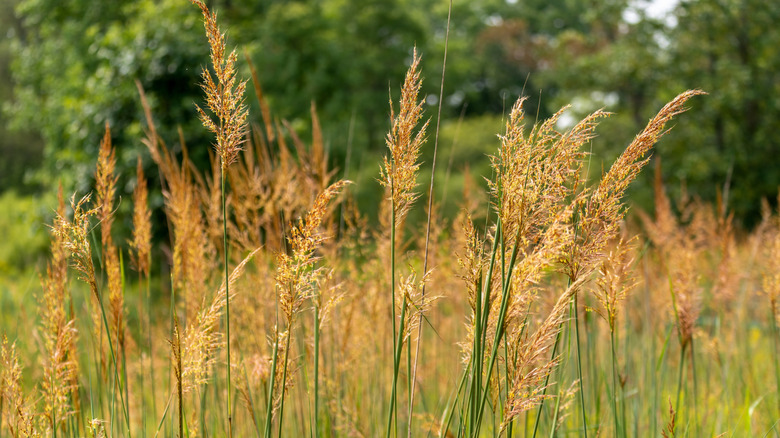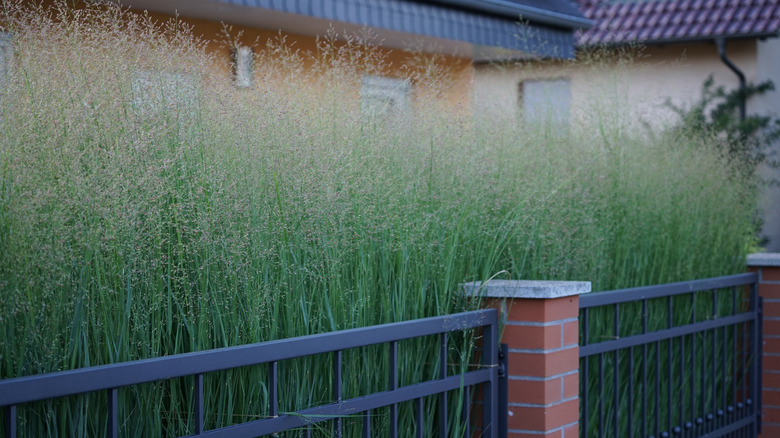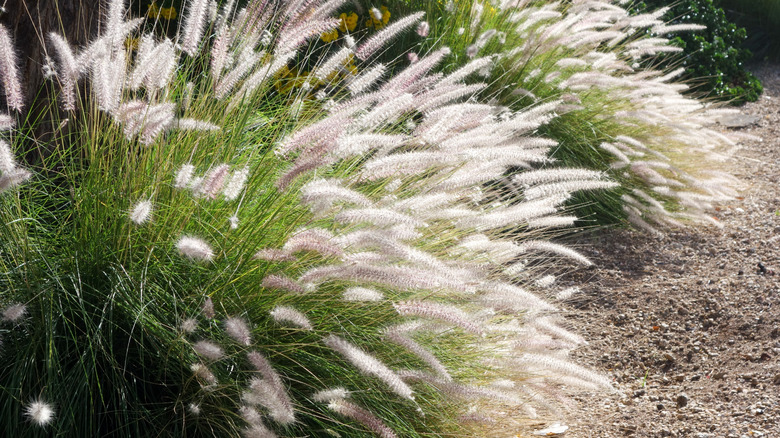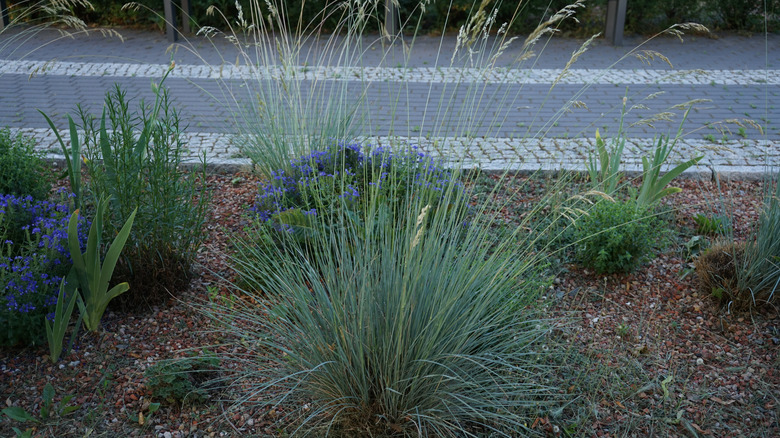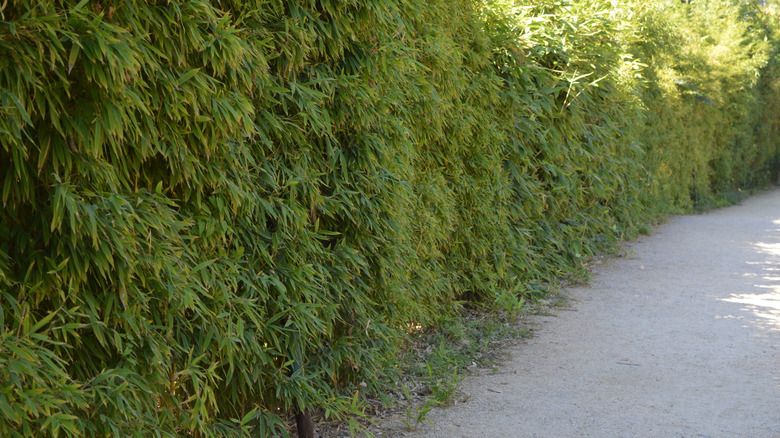The 9 Best Ornamental Grasses That Double As Stylish Natural Privacy Screens
There are many advantages to growing ornamental grasses in your yard. Whether you love their texture or the way they blow in the wind, grasses can offer a lot to any garden, including privacy. Grasses come in many forms, colors, sizes, and textures, but if you choose the right one, it can be as practical as it is pretty. Tall, thickly clumping grasses can provide a privacy screen between your yard and the neighbors or passersby on the street.
From native ornamental grasses like pink muhly grass to fountain grass to bamboo, there is bound to be an option that strikes your fancy. When choosing a variety for your location, consider the soil conditions, the available light, and how high you really want your living privacy screen to grow. Some grasses grow faster than others; some require nearly no maintenance. After reading through our lineup below, you'll be able to weigh all the pros and cons of each grass species and decide on the best option for your yard.
Pink muhly grass
Pink muhly grass (Muhlenbergia capillaris) is hard to beat when it comes to color. It boasts striking pink foliage, with the color appearing in the late summer and early fall. This grass forms 3-foot-tall clumps. As a native species, it's easy to grow, disease and pest resistant, and makes a beautiful addition to the landscape if you aren't looking for too much height. It likes full sun and thrives in thin, rocky soil. Especially beautiful when planted en masse, these plants can make an impressive privacy screen and are hardy in USDA Zones 5 to 9. Learn more about caring for pink muhly grass.
Uruguayan pampas grass
If you're looking for a tall privacy screen with plenty of visual interest, Uruguayan pampas grass (Cortaderia selloana) is an option. But while this grass can grow up to 12 feet tall, it is only hardy in Zones 8 to 10. In colder climates, it can be planted in containers and brought indoors for the winter. You also need to be careful with this prolific self-seeder, which can easily start to out-compete native plants. It's considered invasive in Washington, Oregon, and South Carolina; growing it in these states could damage local ecosystems.
Feather reed grass 'Karl Foerster'
Feather reed grass (Calamagrostis x acutiflora) 'Karl Foerster' only grows to about 3 feet tall, but then sprouts flowers that reach 6 feet in height in summer. Those flowers start out pink, become bronze, and then fade to a golden tan. Hardy in zones 3 to 9, the flowers remain on the stems as warm weather winds down and continue to provide visual interest all winter. And because this grass does not self-seed, you do not have to worry about it taking over your landscape.
Big bluestem grass
Big bluestem grass (Andropogon gerardii) is another North American native grass that can double as a privacy screen. Growing up to 8 feet tall, it is a staple of the prairies and a favorite of many songbirds. It prefers full sun to partial shade and moist soil. In the fall, the foliage turns maroon, adding seasonal interest. Keep in mind that if this grass is planted in a place it loves, it can become quite aggressive. Learn more about the benefits and drawbacks of planting bluestem grass.
Indiangrass
Indiangrass (Sorghastrum nutans) is another important native grass species in prairies across North America. Growing up to 8 feet tall, it also produces gold and purple flowers. The orange and purple fall colors provide late-season interest, but the grass is also known for its golden sheen during the summer. Hardy in zones 4 to 9, this grass even likes the occasional flood or fire, so it can probably withstand whatever you throw at it. Consider combining it with big bluestem for added interest in your stylish privacy screen.
Switchgrass
Switchgrass (Panicum virgatum) boasts lacy tops and purple stigmas during bloom, which are reminiscent of muhly grass. This perennial is hardy in zones 5 to 9; its leaves turn gold in the fall and can grow up to 10 feet tall. Foliage will persist throughout the winter but can be cut back in early spring (learn more about caring for switchgrass through the winter). This grass self-seeds, so depending on how much work you want to do to control its spread, you may decide that cutting it back is necessary. You can combine switchgrass with bluestem or indiangrass for a privacy screen that boasts a wide variety of species.
Fountain grass
Fountain grass (Pennisetum alopecuroides) is commonly found in landscapes because of its relatively moderate size, which doesn't exceed 48 inches in height. Putting these smaller plants in pots can add height for more privacy, making them a good choice for decks or patios. The grass comes in many cultivars, offering plenty to choose from. However, it's important to know it can become weedy and aggressive in warmer regions, making it a better fit for cool climates. Fountain grass is hardy in zones 4 to 10.
Blue oat grass
Another small grass that could work well in planters is blue oat grass (Helictotrichon sempervirens). It's hardy in zones 3 to 8, and its leaves usually die back during cold winters. Blue oat grass only grows to about 2 feet tall; however, its oat-like flowers roughly double the height. Instead of forming a dense screen, the flowers will create an airy sense of privacy. Consider combining it with other grasses if you want to add some density to your screen.
Umbrella bamboo
If shorter grass isn't for you, then umbrella bamboo (Fargesia murielae) may be just the ticket. As a clumping variety, unlike other types of bamboo, this one isn't invasive. It will, however, grow up to 15 feet tall, with each clump measuring up to 3 feet wide, so be ready for a towering screen of bamboo. It thrives in shade, so if you have a shady area, it can be a great option. It's hardy in zones 5 to 9 and will provide year-round interest.
